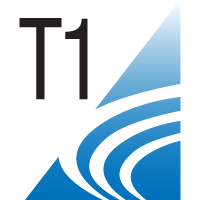Neuro-Audiology (NA)
Adult Diagnostic (AD)
LM312 - An Opportunity of a Lifetime: The Split-Brain Project Revisited
Friday, April 19, 2024
9:45 AM - 10:45 AM EST
Location: A410
Earn 0.1 CEUs
Instructional Level: Advanced
- FM
Frank E. Musiek, PhD
Professor
University of Arizona
University of Arizona
Tucson, ArizonaDisclosure(s): No financial or nonfinancial relationships to disclose.
Lead Presenter(s)
Abstract:
Split brain research has been considered one of the most significant contributions in the history of Neuroscience. Presented will be a personal experience as a member of the research team that examined split-brain participants. A behind-the-scenes view of the origin and development of the neuroscience research that garnered worldwide attention will be discussed. The focus will be on the auditory experiments that lead to the understanding of interhemispheric processing and current interpretations of dichotic listening, temporal pattern tests and the development of dichotic interaural intensity difference (DIID) auditory training .
Summary:
Of all the syndromes in neurology and of all the discoveries in brain research, none is more wondrous than the behavior of a split-brain human patient” –Maria Vasiliadis, Neuroscientist.
Split-brain research was a critical part of split-brain neurosurgery for the control of intractable seizures. This research reached its peak of interest and activity in the 1980s and 1990s but has since waned due to better medical management of these patients. Though the research has declined its impact on basic and clinical science must be remembered and acknowledged by all. The presenter of this session was involved in the split-brain project and will review this period of important audiological experiments that were conducted at Dartmouth-Hitchcock Medical Center.
The research at Dartmouth-Hitchcock Medical Center on split-brain patients was not the first. Early work (mid-1940s) at Rochester, New York was discontinued after a short time and only a few patients were evaluated. Interestingly, psychologists examining these patients after commissurotomy (dividing the two hemispheres of the brain by sectioning the corpus callosum)) found essentially no deficits. Later, Joseph Bogen a neurosurgeon in California reinitiated commissurotomy surgery. Scientists Roger Sperry (who later won the Nobel Prize) and Mike Gazzaniga at Cal Tech investigated Bogen’s patients and made a monumental discovery which was published in 1962. Unlike the researchers in Rochester, Sperry and GazzanigaI was involved in evaluating the auditory system in these patients before and after surgery. Not all patients qualified for auditory testing as our initial criteria (though modified later) required normal peripheral and central auditory findings before surgery. The first patient I saw post-surgery showed essentially the same findings as before surgery: normal pure-tone thresholds and speech recognition bilaterally and essentially normal central auditory findings – with a major exception. Dichotic tests revealed a marked left ear deficit and normal right ear performance. The left ear scores dichotically were at chance levels (near zero)! This result would become an accepted finding for split-brain patients and individuals with corpus callosum dysfunction. Our later research also showed that pattern perception was also dependent on callosal function as split-brain patients post-surgery showed bilateral deficits, again with performance at chance levels. Perhaps, one of the most interesting findings from our investigations was that the dichotic left ear deficit could be offset by decreasing the intensity level in the right ear by ~25 dB. This released the left ear neural circuitry from the well known dichotic suppression effect and resulted in a switching of left and right ear performance. This was the basis for the dichotic interaural intensity difference (DIID) auditory training procedure.
Split brain research has been considered one of the most significant contributions in the history of Neuroscience. Presented will be a personal experience as a member of the research team that examined split-brain participants. A behind-the-scenes view of the origin and development of the neuroscience research that garnered worldwide attention will be discussed. The focus will be on the auditory experiments that lead to the understanding of interhemispheric processing and current interpretations of dichotic listening, temporal pattern tests and the development of dichotic interaural intensity difference (DIID) auditory training .
Summary:
Of all the syndromes in neurology and of all the discoveries in brain research, none is more wondrous than the behavior of a split-brain human patient” –Maria Vasiliadis, Neuroscientist.
Split-brain research was a critical part of split-brain neurosurgery for the control of intractable seizures. This research reached its peak of interest and activity in the 1980s and 1990s but has since waned due to better medical management of these patients. Though the research has declined its impact on basic and clinical science must be remembered and acknowledged by all. The presenter of this session was involved in the split-brain project and will review this period of important audiological experiments that were conducted at Dartmouth-Hitchcock Medical Center.
The research at Dartmouth-Hitchcock Medical Center on split-brain patients was not the first. Early work (mid-1940s) at Rochester, New York was discontinued after a short time and only a few patients were evaluated. Interestingly, psychologists examining these patients after commissurotomy (dividing the two hemispheres of the brain by sectioning the corpus callosum)) found essentially no deficits. Later, Joseph Bogen a neurosurgeon in California reinitiated commissurotomy surgery. Scientists Roger Sperry (who later won the Nobel Prize) and Mike Gazzaniga at Cal Tech investigated Bogen’s patients and made a monumental discovery which was published in 1962. Unlike the researchers in Rochester, Sperry and Gazzaniga
Learning Objectives:
- Upon completion, Participants will be able to recount the intriguing historical events surrounding the evolution of the research involving split brain patients which lead to the popular concept of “Left brain – Right brain”.
- Upon completion, Participants will be able to describe the functional anatomy of the corpus callosum and interhemispheric processing attributable to the study of split-brain patients.
- Upon completion, Participants will be able to discuss the marked impact split-brain research has had on neuroscience and audiology including dichotic listening and training, pattern perception and central suppression effects.

